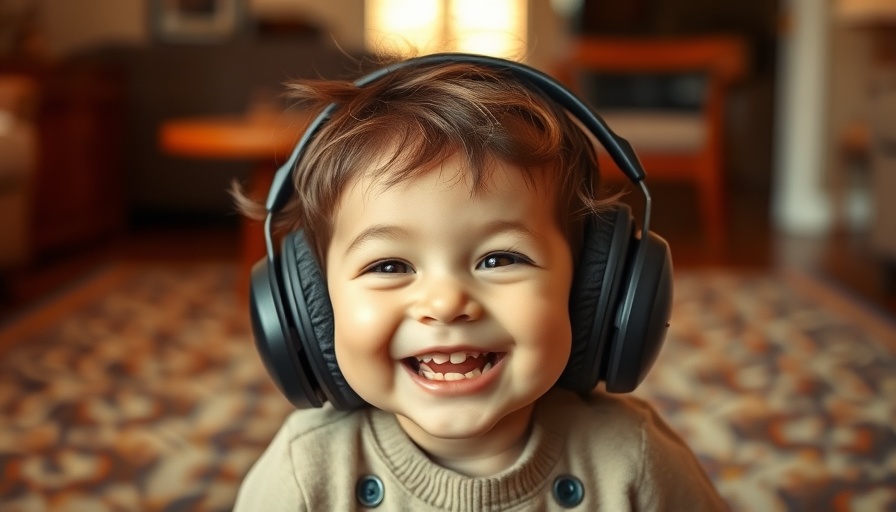
Understanding the Importance of Hearing Protection for Infants
Welcoming a new baby into your life brings a multitude of responsibilities, with hearing protection being one that often goes unnoticed. Infants possess sensitive hearing that can be easily compromised by loud noises. According to the World Health Organization, environmental noise can have a lasting impact on children's hearing when exposed continuously. The first few years of life are crucial for auditory development, making it imperative for parents to learn how to safeguard their baby's hearing from the outset.
Tips for Protecting Your Baby’s Ears
While the idea of needing to protect your baby’s ears might seem daunting, it can be quite simple with the right strategies. Start by identifying environments that can be distracting or potentially harmful. For example, loud venues like concerts or sports events should only be attended if necessary, and even then, protective earmuffs can be utilized.
When planning outings, carry a pair of baby-safe earmuffs in your diaper bag. Many products on the market, such as those from Decibel Defense, are designed specifically for young children. With adjustable headbands and comfortable padding, these earmuffs provide an excellent fit for infants and young children, ensuring they can still enjoy experiences without risking their hearing.
The Role of Quality Hearing Protection
Investing in quality hearing protection can be critical for your little one's auditory health. Look for products with a high Noise Reduction Rating (NRR), which measures how much sound is blocked. Decibel Defense earmuffs boast an impressive NRR of 28 dB, offering robust protection against harmful noise levels. Designed with durable materials, they are easy to clean and built to last through the wear and tear of early childhood.
Fun and Fashionable Hearing Protection
Kids are unlikely to wear uncomfortable gear, so finding stylish and enjoyable hearing protection can make a difference. Decibel Defense has incorporated fun colors and designs that appeal to children, turning the necessity of hearing protection into an exciting accessory for kids. Making ear protection fun means kids are more likely to wear them consistently, whether at a family gathering or a trip to a theme park.
The Emotional Connection: Building a Safe World for Your Baby
Parents inherently wish to shield their children from harm, making the role of emotional well-being closely tied to physical protection. By actively participating in their child’s safety and well-being, parents can foster a nurturing environment. This sense of care can reduce parental anxiety when it comes to potentially dangerous environments, allowing for a more enjoyable outing.
How Other Parents Are Protecting Their Children
It can be enlightening to hear how other parents have successfully managed hearing protection for their children. By sharing your experiences and seeking advice, you can build a communal knowledge base around the best products and practices. Local parenting groups often organize workshops or discussion forums where parents can exchange tips and recommend specific brands that have worked well for them.
When to Seek Professional Help
If you have concerns regarding your child’s hearing or noise sensitivity, do not hesitate to consult with a pediatrician. Early detection of any potential hearing issues can often lead to better outcomes in developmental progress. Regular check-ups should include a discussion of your child’s hearing health to ensure they are developing normally.
Conclusion: Take Action to Protect Your Little One’s Hearing
Protecting your baby's hearing is imperative, and with so many resources available, achieving this goal doesn’t have to feel overwhelming. By being proactive through the careful selection of quality protective equipment and remaining aware of your child's environment, you can ensure a bright and healthy auditory experience for years to come. Share this knowledge with fellow parents and encourage community conversations about hearing protection for children.
 Add Row
Add Row  Add
Add 




Write A Comment